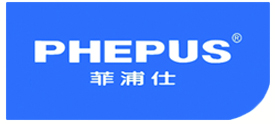What are the components of a Reverse Osmosis System?
作者:PHEPUS 發(fā)布日期:2016-02-24
What are the components of a Reverse Osmosis System?
Basic components common to all Reverse Osmosis Systems:
- Cold Water Line Valve: Valve that fits onto the cold water supply line. The valve has a tube that attaches to the inlet side of the RO pre filter. This is the water source for the RO system.
- Pre-Filter (s): Water from the cold water supply line enters the Reverse Osmosis Pre Filter first. There may be more than one pre-filter used in a Reverse Osmosis system. The most commonly used pre-filters are sediment filters. These are used to remove sand silt, dirt and other sediment. Additionally, carbon filters may be used to remove chlorine, which can have a negative effect on TFC (thin film composite) & TFM (thin film material) membranes. Carbon pre filters are not used if the RO system contains a CTA (cellulose tri-acetate) membrane.
- Reverse Osmosis Membrane: The Reverse Osmosis Membrane is the heart of the system. The most commonly used is a spiral wound of which there are two options: the CTA (cellulose tri-acetate), which is chlorine tolerant, and the TFC/TFM (thin film composite/material), which is not chlorine tolerant.
- Post filter (s): After the water leaves the RO storage tank, but before going to the RO faucet, the product water goes through the post filter (s). The post filter (s) is generally carbon (either in granular or carbon block form). Any remaining tastes and odors are removed from the product water by post filtration.
- Automatic Shut Off Valve (SOV): To conserve water, the RO system has an automatic shutoff valve. When the storage tank is full (this may vary based upon the incoming water pressure) this valve stops any further water from entering the membrane, thereby stopping water production. By shutting off the flow this valve also stops water from flowing to the drain. Once water is drawn from the RO drinking water faucet, the pressure in the tank drops and the shut off valves opens, allowing water to flow to the membrane and waste-water (water containing contaminants) to flow down the drain.
- Check Valve: A check valve is located in the outlet end of the RO membrane housing. The check valve prevents the backward flow or product water from the RO storage tank. A backward flow could rupture the RO membrane.
- Flow Restrictor: Water flow through the RO membrane is regulated by a flow control. There are many different styles of flow controls. This device maintains the flow rate required to obtain the highest quality drinking water (based on the gallon capacity of the membrane). It also helps maintain pressure on the inlet side of the membrane. Without the flow control very little drinking water would be produced because all the incoming tap water would take the path of least resistance and simply flow down the drain line. The flow control is located in the RO drain line tubing.
- Storage Tank: The standard RO storage tank holds up to 2.5 gallons of water. A bladder inside the tank keeps water pressurized in the tank when it is full.
- Faucet: The RO unit uses its own faucet, which is usually installed on the kitchen sink. In areas where required by plumbing codes an air-gap faucet is generally used.
- Drain line: This line runs from the outlet end of the Reverse Osmosis membrane housing to the drain. This line is used to dispose of the impurities and contaminants found in the incoming water source (tap water). The flow control is also installed in this line.
Diagram of a Reverse Osmosis System with Basic Components:





